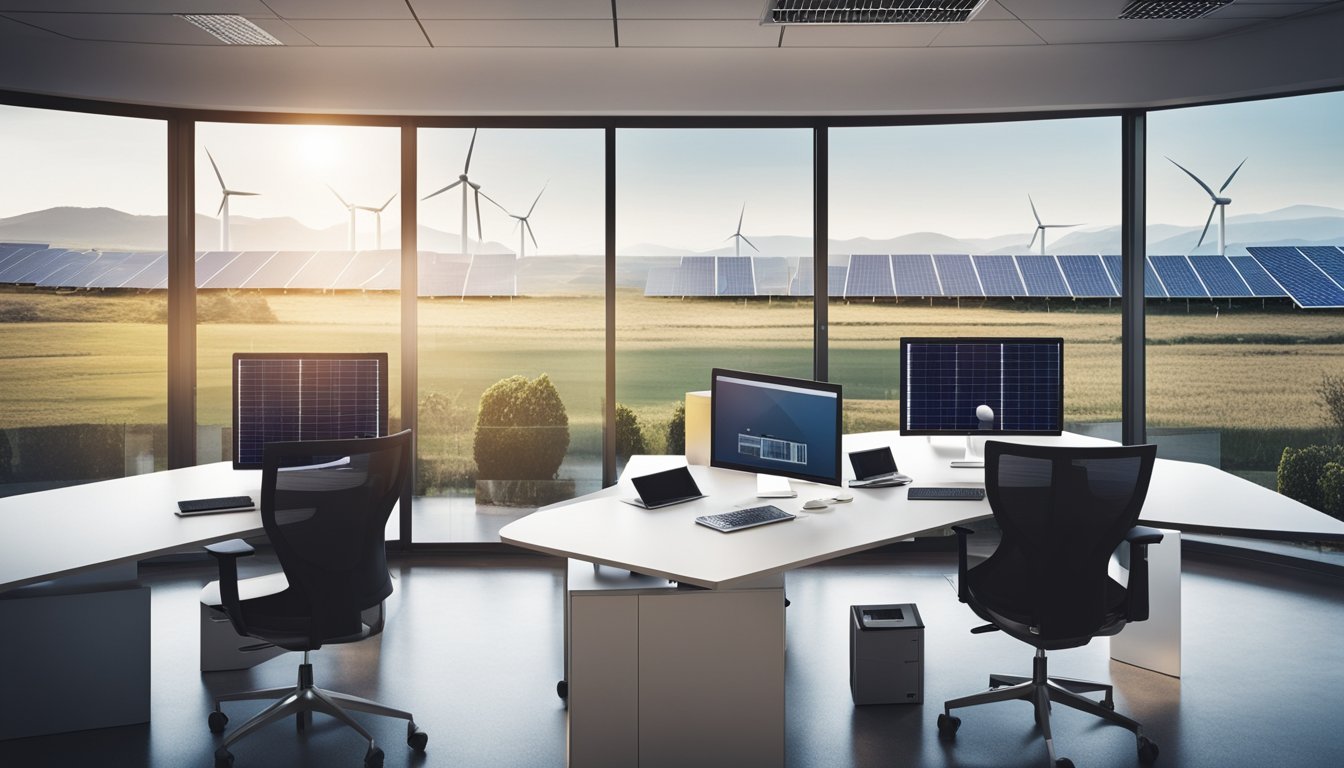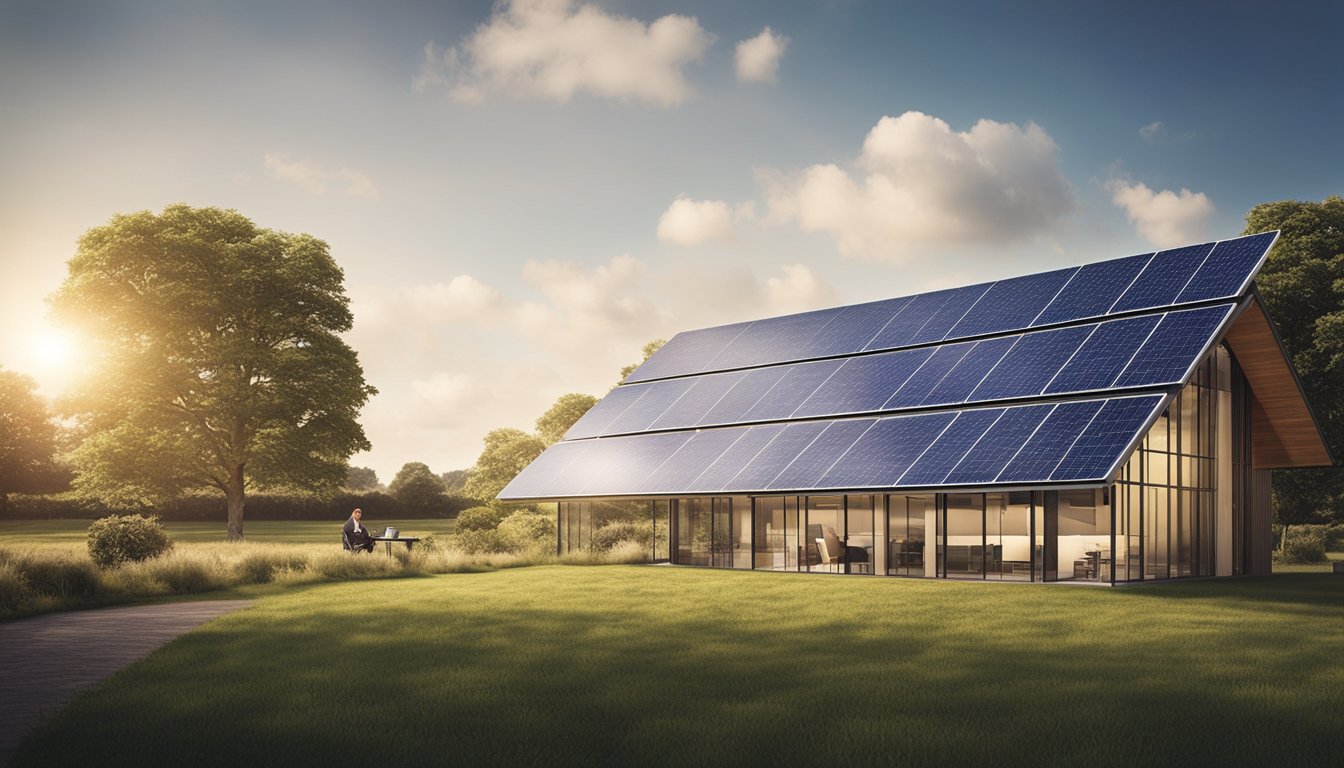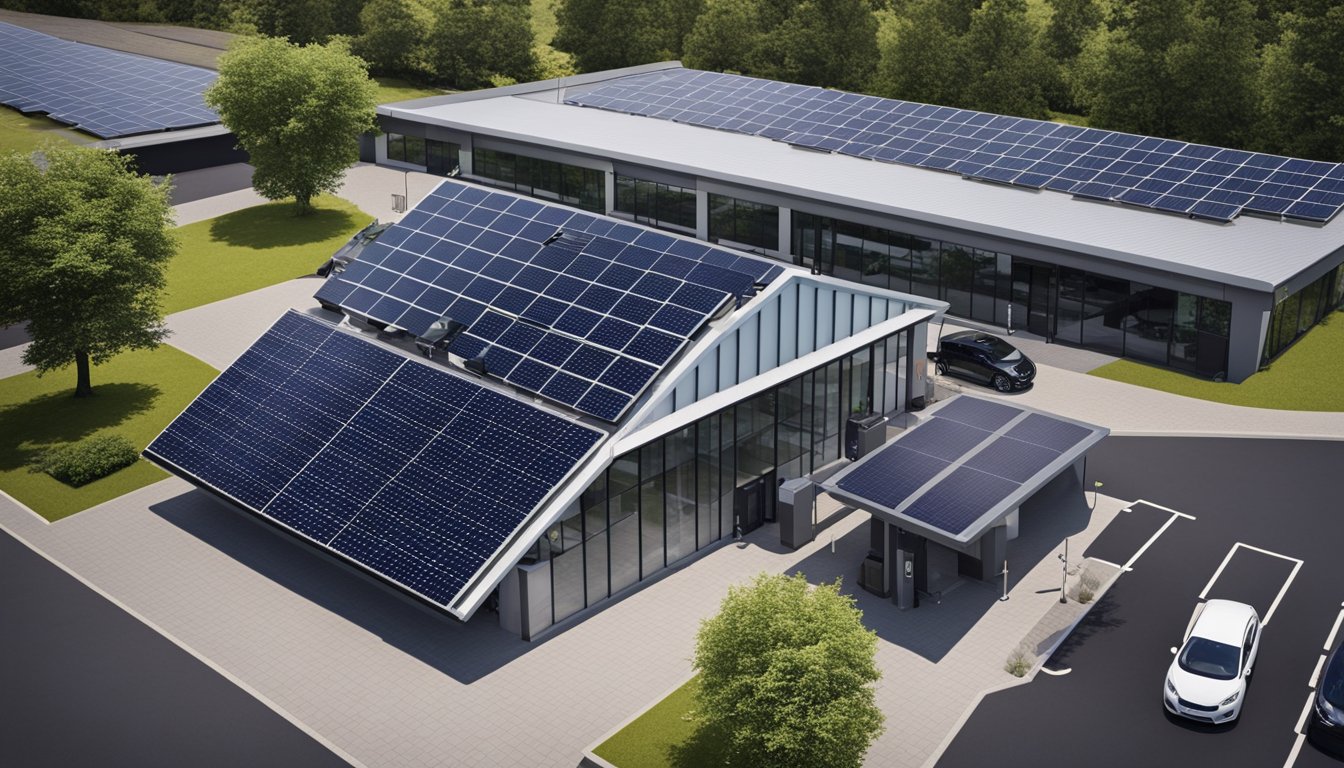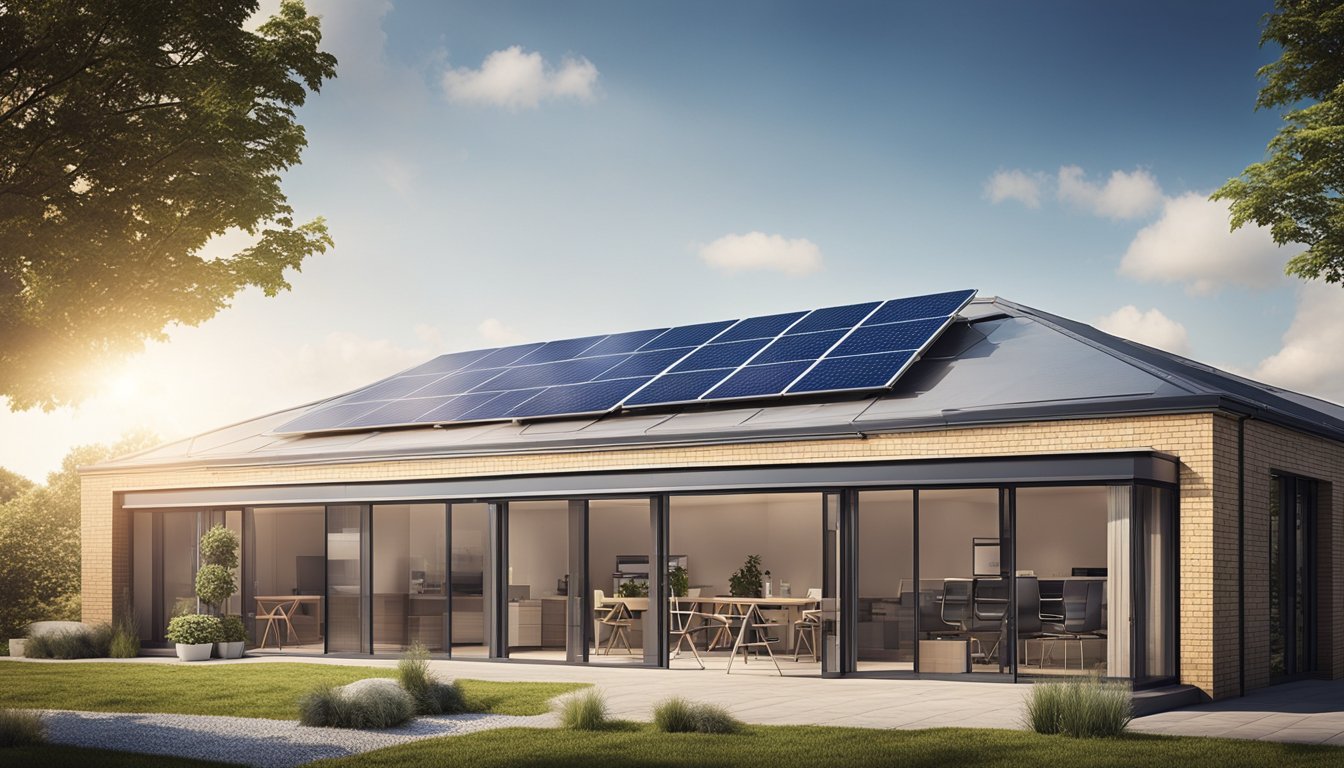Late updated: 06 Oct 2024 10:10
Written by: Amber Collins
Green Energy Solutions For Small UK Offices: Boost Efficiency and Sustainability
As we navigate the complex landscape of climate change, small UK offices face a unique opportunity to contribute positively by integrating green energy solutions into their operations. Embracing renewable sources such as wind, solar, and biomass not only reduces carbon footprints but also enhances a business's sustainability credentials. The transition to green energy presents a win-win situation: it helps the environment while potentially reducing operational costs for offices.

By adopting measures such as energy-efficient lighting, smart thermostats, and renewable electricity providers, small offices can play a significant role in mitigating environmental impact. These solutions are not just environmentally friendly; they also offer potential financial savings and improve the workplace environment. Our future-forward approach to energy consumption can drive meaningful change and increase societal commitment to sustainable growth.
Exploring initiatives such as the Energy Technology List or leveraging government support can guide us in making cost-effective and environmentally sound decisions. The path to greener offices is filled with opportunities that encourage innovation, responsibility, and a better business ecosystem in the UK.
Key Takeaways
- Green energy solutions benefit both the environment and operational costs.
- Energy-efficient measures can enhance sustainability and workplace quality.
- Support and resources are available to adopt green practices effectively.
Fundamentals of Green Energy for Small UK Offices

Green energy solutions are vital for small UK offices aiming to reduce carbon emissions and improve energy efficiency. Emphasising renewable sources and energy-saving practices can significantly lower energy consumption and contribute to climate sustainability.
Understanding Green Energy
Green energy refers to power generated from natural resources that are replenishable and have minimal environmental impact. In the UK, renewable energy sources like solar, wind, and hydro are integral components of zero-carbon initiatives. These energy forms not only cut carbon emissions but also align with sustainable development goals. The UK Green Building Council (UKGBC) champions these initiatives, setting energy performance targets that guide offices in reducing their carbon footprint. Understanding these basics is essential for any office aiming to transition towards greener operations.
Assessing Energy Demand and Capacity
Evaluating an office's energy demand involves understanding its energy consumption patterns and identifying key areas for improvement. By assessing current needs and capacity, businesses can better plan their shift to renewable sources. It's important to consider both direct energy usage, such as lighting and heating, and indirect uses, such as electronic devices that contribute to the overall energy demand. By setting clear energy performance requirements, offices can measure progress against energy efficiency benchmarks. These assessments allow for targeted actions to reduce energy demand, contributing to reduced carbon emissions and enhanced operational efficiency.
Exploring Energy-Saving Measures
Implementing energy-saving measures is crucial for reducing energy consumption in small offices. Simple actions like switching to LED lighting, improving insulation, and installing energy-efficient appliances can lead to significant savings. Further measures include considering smart meters or energy management systems that monitor and optimise energy use. Engaging in programmes that educate employees about energy-saving practices also fosters a culture of sustainability. These practical steps, when combined with an investment in renewable energy, propel offices towards achieving zero carbon targets and aligning with broader climate change mitigation efforts. Recognising these fundamental actions is key to enhancing both environmental and economic performance.
Implementing Green Energy Solutions

Embracing green energy can significantly reduce energy bills while aiding efforts to achieve net-zero carbon emissions. Key strategies include the installation of renewable energy technologies, optimising heating and ventilation, and improving the efficiency of lighting and office equipment. Financial incentives are available to support these initiatives, making green transitions more accessible.
Renewable Energy Technology Installation
Utilising renewable energy sources like solar panels and wind turbines is a cornerstone of a green strategy. Solar panels are particularly effective for small offices, providing a reliable way to generate electricity. Additionally, business owners can take advantage of the Smart Export Guarantee, which compensates them for surplus energy sent back to the grid.
Heat pumps offer another effective option, particularly when integrated into broader energy systems. They provide heating and cooling solutions that are far more efficient than traditional systems. For those interested in financial support, the Clean Heat Grant and Green Gas Support Scheme provide funding to assist with these installations. Seeking advice from energy suppliers can further enhance the decision-making process.
Optimising Heating and Ventilation
Optimising heating, ventilation, and air conditioning systems is crucial for reducing running costs. Investing in efficient heating systems, such as heat recovery systems, can dramatically lower energy consumption. Such systems recapture waste heat and repurpose it, saving on heating expenses.
In addition, smart ventilation controls can manage airflow and maintain indoor air quality while reducing unnecessary energy usage. Improvements in insulation, combined with smart controls, allow for maintainable office environments that are both comfortable and energy-efficient. Utilising the Renewable Heat Incentive can also offer financial benefits to support these updates.
Enhancing Lighting and Office Equipment Efficiency
Enhancing lighting efficiency is another vital area. Switching to LED lighting can bring substantial savings and reduce carbon footprint. LED lights use significantly less energy and last longer than traditional bulbs, providing an easy win for sustainability.
Similarly, selecting energy-efficient office equipment—like Energy Star-rated appliances—can further reduce electricity usage. Implementing smart controls and timers helps minimise energy waste from equipment left on unnecessarily. Regular equipment audits help identify other areas where improvements can be made.
Financial Incentives and Support
Numerous financial incentives are available to assist businesses in making green transitions. Business grants, like those found on the Gov.uk Business Finance and Support Finder, offer invaluable help. These can reduce the financial burden associated with adopting renewable technologies.
Additionally, the Citizens Advice service can offer guidance on the Smart Export Guarantee. Utilising such schemes not only makes green solutions more affordable but also accelerates progress towards sustainability goals. In essence, these grants and incentives make it much easier for us to adopt new technologies and reduce our environmental impact.
Frequently Asked Questions

In this section, we focus on addressing common inquiries about green energy solutions for small UK offices. From efficiency and providers to incentives and costs, we delve into practical aspects essential for transitioning to renewable energy.
What are the most efficient green energy solutions for small offices in the UK?
Small offices in the UK can benefit from solar panels and wind micro-turbines. Solar PV panels offer efficient energy conversion, while wind micro-turbines are suitable for locations with consistent wind. These technologies help reduce reliance on traditional energy sources.
Which renewable energy providers offer the best services for small UK office spaces?
Several providers specialise in renewable energy for small offices, such as Ecotricity, Good Energy, and Bulb. These companies are known for comprehensive services and competitive pricing, allowing offices to seamlessly transition to green energy.
How can small UK offices contribute to the country's green energy initiatives?
Offices can implement energy-efficient appliances, reduce waste, and participate in local and national green energy schemes. By sourcing energy from renewable suppliers, small offices contribute to the reduction of the national carbon footprint.
What incentives are available for small offices in the UK to switch to renewable energy?
The UK government offers incentives like the Green Business Fund and Feed-in Tariffs. These programmes support offices in reducing costs associated with the installation of renewable systems, encouraging more businesses to make the switch.
What are the key considerations when selecting a green energy provider for a small office in the UK?
Factors include the provider's reliability, pricing, and customer service. We should also assess the range of renewable sources on offer and reviews from other small businesses to ensure a positive supplier experience.
How does the cost of renewable energy compare to traditional energy sources for small offices in the UK?
Renewable energy can be cost-effective in the long term due to lower operational costs and potential government incentives. While initial setup costs might be higher, small offices often see significant savings over time compared to traditional energy sources.
